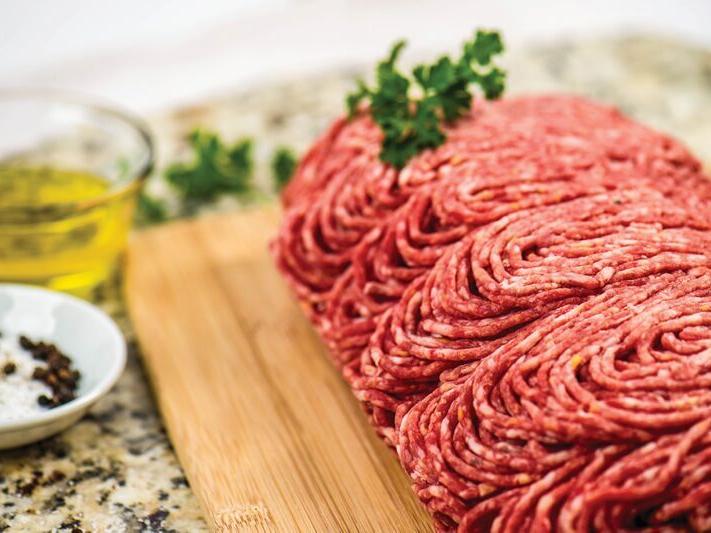
Breed differentiation within a species is quite common. A German Shephard is certainly not equivalent to a Miniature Schnauzer in terms of purpose. There are likewise many differences between our modern beef and dairy breeds.
Yes, some dual-purpose breeds are still preferred on small farms or homesteads, but overall, maximum efficiency is reached with dairy cows that convert feed into milk and beef cattle that convert feed into muscle (meat).
A merger for demand, profitability
So, why are we discussing the idea of merging beef and dairy genetics? It comes down to market demand and profitability. All dairy cattle will one day become “beef” cattle. For dairy steers that day comes sooner than for milking cows that are culled after several years of producing milk, but beef is the final destination.
With our bulk meat processing plants and standardized market, consistency is key for smooth operations. Therefore, the beef industry wants livestock that meet a set of standards tht include age, weight, marbling, ribeye shape and size,and dressing percentages at time of harvest.
Those standards are all based on our modern beef cattle profile. Thus, dairy farmers typically experience discounted payments when they sell livestock into the beef market for failure to meet one or several of those standards. Most farmers will still want their entire milking herd to be strictly dairy, as that is often more efficient.
To accomplish this, farmers would select their top milking cows and breed them exclusively with dairy sexed semen. Cows with poor genetics and at the bottom of the production lineup could all be bred to beef sires.
Additionally, all or most of the replacement heifers could be bred to beef as there is some evidence beef breeds have better calving ease than many of our dairy cattle and those replacement heifers are not yet proven producers.
The result is the farm’s top cows produce nearly all heifer calves for replacements, which increases the farm’s overall production and genetic improvement, while the bottom cows produce a crossbreed offspring that may be either a heifer or a bull calf.
Unfortunately, beef sexed semen for male dominant offspring is not readily available. While the ideal plan would also include all of our bottom cows producing male crossbreeds that could be raised for beef, selling crossbreeds of either gender is usually more profitable than selling their dairy counterparts for a non-dairy purpose.
This is especially true for dairy steers as they have little purpose outside of the beef market but do not fit the industry’s mold for the ideal beef animal.
Some dairy genetics favorable in beef market
Note, some aspects of dairy genetics are favorable in the beef market. Dairy breeds naturally have better marbling scores than many of the beef breeds and also have a smaller percentage of trim fat. But the road splits from here when thinking about Holstein versus Jersey dairy cows.
Holstein frames usually are bigger than what the beef market wants. So, selecting a proven sire with a smaller frame size is ideal, and will likely yield easier calving, too.
Jersey cattle have the opposite problem. Look for beef genetics with smaller birth weights, but an increased frame size. Both breeds have great needs for genetics that promote better feed conversion to pounds of gain as we no longer need an animal that is efficient at converting feed into milk production.
Is a beef breed good enough to get the job done?
Is any beef breed or beef semen good enough to get the job done? That depends on what you are trying to accomplish. If the goal is to be highly profitable by introducing beef genetics, I would answer, “no.”
Consider paying a little extra for the beef genetics that will best compliment your dairy herd. Essentially, the goal of crossbreeding in this scenario is to make a dairy-beef cross that looks and performs like a beef animal. While it may seem silly, the beef market prefers solid-colored animals.
Breeding Holsteins to Angus or other solid black beef is preferred and similarly, breeding Jerseys to Limousin or Charolais often produces solid cream or fawn-colored cattle. In the end, these cattle should be round and smooth, not angular, about 1200 pounds, and ideally sold before 30 months old if not 2 yrs.
One final thought: if you are trying to produce a marketable beef animal, you must feed it like a beef animal. They are not dairy heifer replacements or dry cows and will perform best on a ration designed for their purpose. This often includes a higher ration of grain with need for a separate pen/facility.
Matthew Nussbaum is an OSU Extension Agriculture and Natural Resources Program Assistant and may be reached at 330-264-8722.
The Link LonkFebruary 16, 2021 at 03:11PM
https://ift.tt/3aoy4kH
Adding value to the herd with beef and dairy crossbreeding - Wooster Daily Record
https://ift.tt/2RxTDX4
Beef

No comments:
Post a Comment